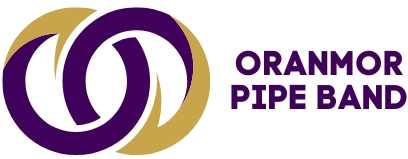In a world where digital currencies are all the rage and tech jargon flows like coffee at a startup, blockchain has emerged as the superhero of the digital age. It’s not just a buzzword; it’s the backbone of cryptocurrencies and a game-changer for countless industries. But what exactly is blockchain, and why should anyone care?
Table of Contents
ToggleOverview of Blockchain Technology
Blockchain technology functions as a decentralized digital ledger. It records transactions across various networks, ensuring transparency and security. By design, it eliminates the need for intermediaries, streamlining processes in sectors such as finance, healthcare, and supply chain management.
Blocks within a blockchain contain transaction data, each linked to the previous one. This structure guarantees that once information is added, altering it becomes nearly impossible without consensus from the network participants. Every node in the network verifies these transactions, maintaining integrity and trust.
Multiple types of blockchain exist, such as public, private, and consortium blockchains. Public blockchains allow anyone to participate, enhancing accessibility. Private blockchains restrict access to authorized users, offering greater control over data management. Consortium blockchains require a group of entities to validate transactions, blending the benefits of both public and private networks.
Applications of blockchain extend beyond cryptocurrencies. In supply chains, it enables tracking of products from origin to consumer. This capability enhances accountability, reducing fraud and errors. Identity verification also benefits as blockchain provides secure and immutable records.
The technology’s key features include decentralization, security, and transparency. Decentralization ensures that no single entity holds control, promoting fairness. Security stems from cryptographic techniques that protect data. Transparency allows stakeholders to access a shared view of the transaction history.
Adoption continues to grow as businesses realize the potential efficiencies blockchain offers. Financial institutions, governments, and tech companies increasingly integrate blockchain solutions, signaling a shift in how data is managed and exchanged.
Getting Started with Blockchain Tutorials

Understanding blockchain technology begins with the right resources. Choosing effective materials can streamline the learning process and foster deeper insights into this innovative field.
Choosing the Right Resources
Identifying suitable educational materials is essential for mastering blockchain concepts. Books like “Mastering Bitcoin” by Andreas Antonopoulos provide foundational knowledge. Online platforms like Coursera and Udacity offer structured courses with expert instruction. Open-source communities encourage exploration, sharing valuable insights and practical applications. Engaging with forums, such as Reddit or Stack Exchange, can supplement learning by accessing diverse perspectives. Leveraging video tutorials on YouTube offers visual learners an interactive approach. Selecting resources tailored to personal learning preferences ensures a more effective experience.
Free vs. Paid Tutorials
Evaluating free versus paid tutorials presents critical considerations. Free tutorials often provide introductory content, offering a broad overview. Quality may vary, so users must assess reviews before diving in. Paid tutorials typically deliver structured learning paths and often come with additional resources, like quizzes or personal mentorship. While investment in quality materials may seem significant, the return on knowledge can justify the cost. Comparing course outlines helps determine which option aligns best with learning objectives. Ultimately, balancing free and paid resources can enhance one’s blockchain education effectively.
Understanding Blockchain Concepts
Blockchain technology involves specific terminology and functionality crucial for grasping its principles effectively.
Key Terminology
Blockchain consists of essential terms like “nodes” and “ledgers.” Nodes represent individual devices participating in the network, maintaining copies of the blockchain for verification. A ledger functions as the database, housing all transaction records securely. Another critical term is “smart contracts,” which automate processes through self-executing agreements embedded in code. Transactions occur in blocks, and once filled, they link to previous blocks, creating a chronological chain. Understanding these terms forms a foundation for deeper exploration of blockchain’s functionalities.
How Blockchain Works
Blockchain operates as a decentralized system, where each transaction occurs across numerous nodes rather than a single entity. A user initiates a transaction, which broadcasts to the network for verification. Consensus mechanisms, such as Proof of Work or Proof of Stake, validate the transaction by requiring agreement among nodes. Once verified, the transaction groups with others into a block. This block links to the preceding block, forming a secure chain. Changes to any block necessitate consensus from the majority, making tampering highly unlikely. Blockchain’s transparency ensures that all participants can view the transaction history, fostering trust and accountability.
Popular Blockchain Tutorial Platforms
Numerous platforms offer comprehensive blockchain tutorials, catering to various learning styles. Accessing structured courses or engaging video content can enhance understanding of blockchain technology.
Online Courses
Numerous online platforms provide structured courses on blockchain. Websites like Coursera, Udemy, and edX offer extensive courses that cover beginner to advanced topics. Students gain insights into smart contracts, decentralized applications, and consensus mechanisms. Certifications from these courses often enhance employability in tech-driven fields. Each course typically includes video lectures, quizzes, and assignments, promoting active learning. Additionally, some offer peer discussion forums, allowing learners to collaborate and share knowledge.
YouTube Channels
Several YouTube channels focus on blockchain education, delivering free visual content. Channels like Simply Explained, Dapp University, and Ivan on Tech present blockchain concepts in an accessible format. These channels often feature tutorials, market updates, and expert interviews, illustrating real-world applications. Viewers can benefit from interactive learning experiences through live streams and Q&A sessions. Engaging video content accommodates diverse learning preferences, making complex topics easier to grasp and retain.
Blockchain technology is reshaping the digital landscape by offering unprecedented transparency and security. Its applications extend far beyond cryptocurrencies, influencing sectors like supply chain management and identity verification. As the demand for knowledgeable professionals in this field grows, leveraging a mix of free and paid educational resources can significantly enhance one’s understanding.
Engaging with diverse platforms and communities fosters a deeper grasp of blockchain concepts. Whether through structured online courses or interactive video tutorials, there’s a wealth of information available for anyone eager to learn. Embracing this knowledge not only prepares individuals for future opportunities but also contributes to the ongoing evolution of this transformative technology.





